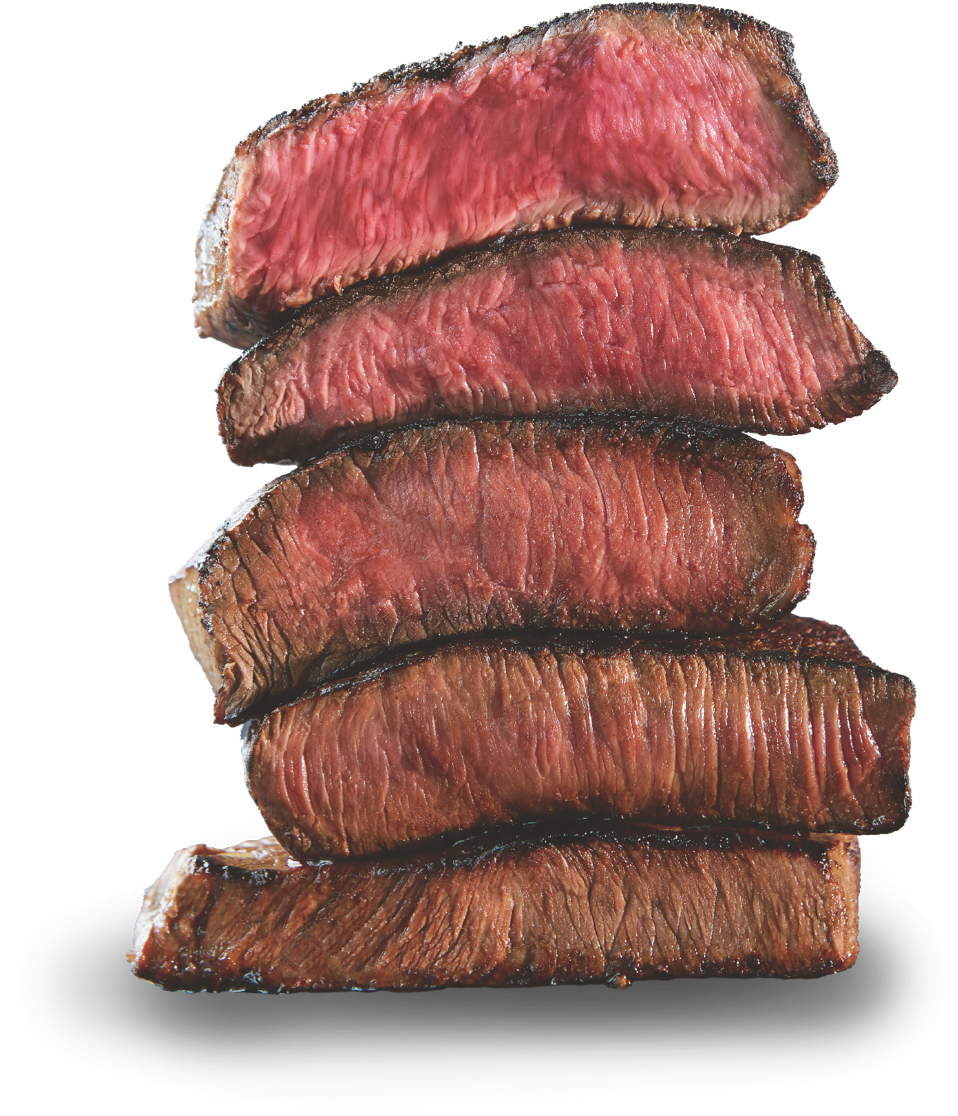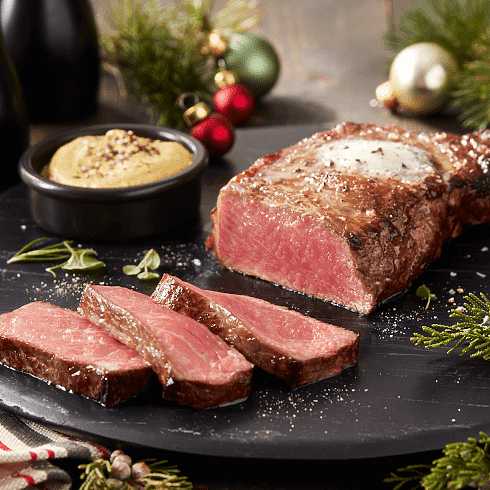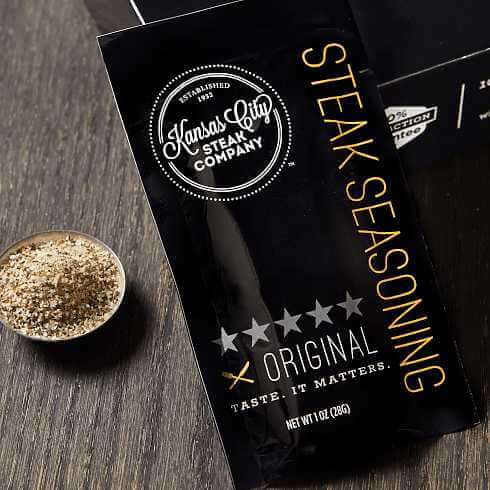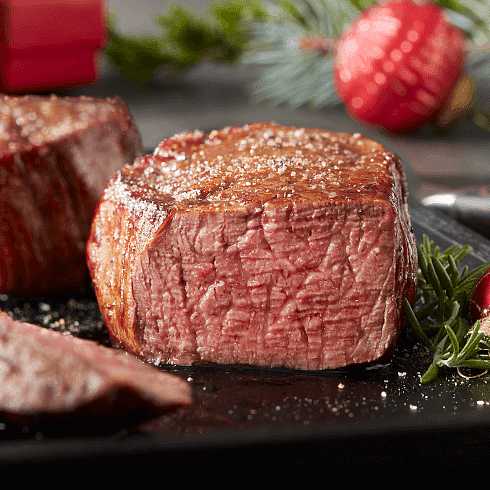

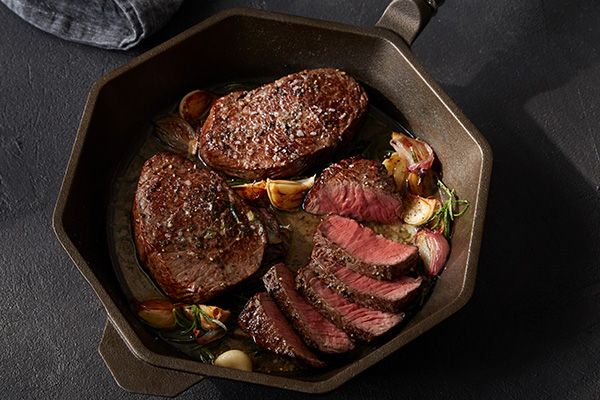
How To Cook a Steak in A Cast Iron Skillet
You may have heard that cooking steak in a cast iron skillet is an excellent alternative to grilling, and it is. But are you wondering how to cook a steak in a cast iron skillet? Everything you need to know is right here.
Cooking steak in a cast iron pan is ideal because cast iron heats very evenly and retains heat exceptionally well. A pre-heated cast iron skillet provides the intense heat needed to sear the exterior of a steak to a crispy, flavorful golden-brown while also cooking the interior to perfection. This method works very well with steaks 1–1½ inches thick.
You can also cook steak in a cast iron skillet and oven. This is especially useful when using the Reverse Sear technique, which is terrific for thick-cut steaks, including Filet Mignon Steaks over 2 inches thick and Extra-Thick Cut Bone-In Ribeye Steaks, also known as Cowboy-Cut Steaks or Tomahawk Steaks.
Follow the instructions below, and soon you'll be a pro at cooking steaks with cast iron. We've also included a chart that will tell you the cooking temperatures and times required. Be sure to use a meat thermometer for the best results. The steak of your dreams is a cast iron pan away.
If you know what specific cut of steak you are cooking, visit our How to Cook Steaks page and select the cut of steak for more specific instructions!
Cooking Steak in A Cast Iron Skillet
Cast iron skillets heat up quickly and transfer heat efficiently, making them an excellent cooking choice for stove-top steaks. Even when working with a large thick-cut steak, cast iron skillets produce juicy, tender inside and the rich, golden-brown exterior that every steak lover craves.
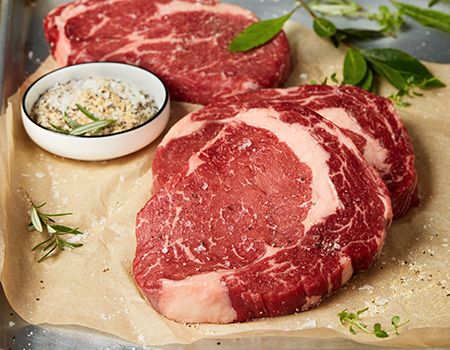
Thaw steak before cooking
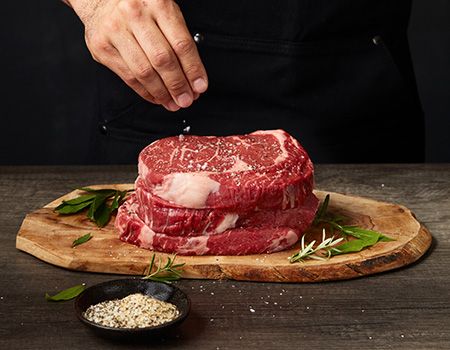
Season your steak as desired
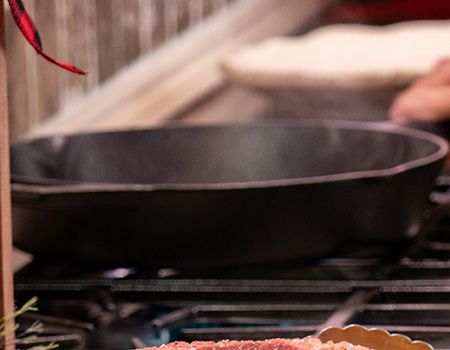
Preheat the cast iron skillet
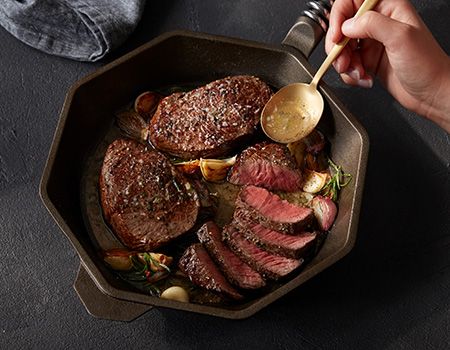
Place steaks in coated, hot skillet
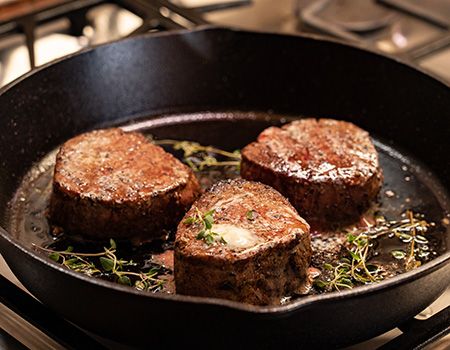
Cook steaks based on the desired doneness
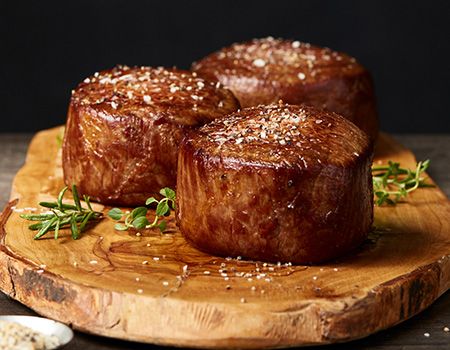
Remove and rest the steak for 5–10 minutes
Remove and rest the steak for 5–10 minutes before serving, covering lightly with foil. The temperature of the meat will continue to rise about 5°F during this time (this is called "carryover cooking").
Resting your steak is important because the heat of cooking pulls the juices in the meat toward the surface; if you slice into it immediately after cooking, those flavorful juices will end up on your plate, not in your steak. Allowing the steak to rest will give the juices time to sink back in and throughout the meat, keeping it moist and flavorful.
The final internal temperature of your steak should match your desired level of doneness, as listed in the cast iron Cooking Times Chart below. We recommend using a meat thermometer to ensure your steak is cooked to perfection.
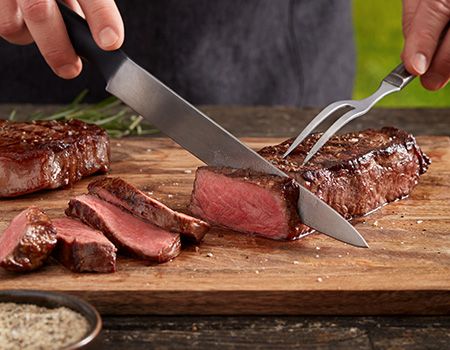
Carve your steak and serve!
Steak Cooking Times Chart in Cast Iron Skillets
Cooking times for Cast Iron Steaks are provided in the chart below. Stick to the specified steak cooking times and use a meat thermometer and the Measuring Doneness Chart below to achieve the perfect steak doneness. Additionally, you can find cut specific steak cooking recommendations for each cut on our How To Cook Steaks page.
